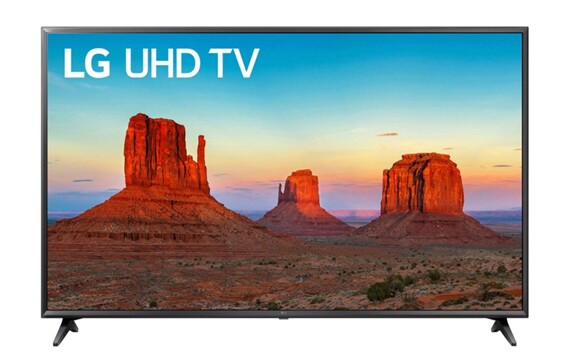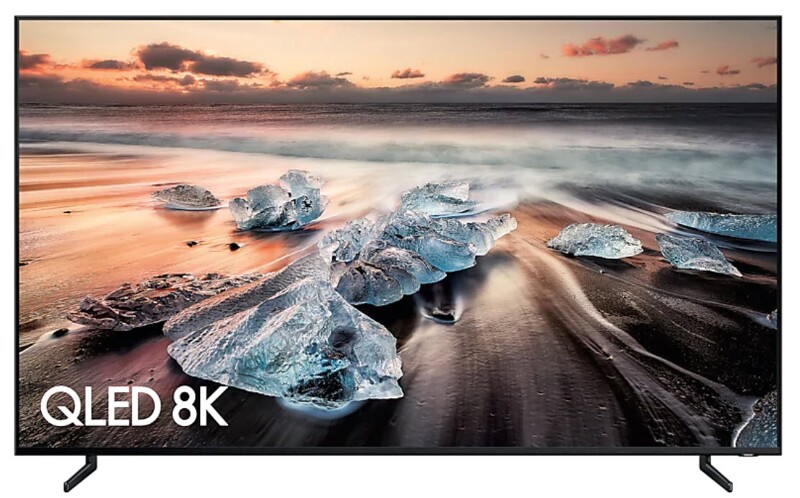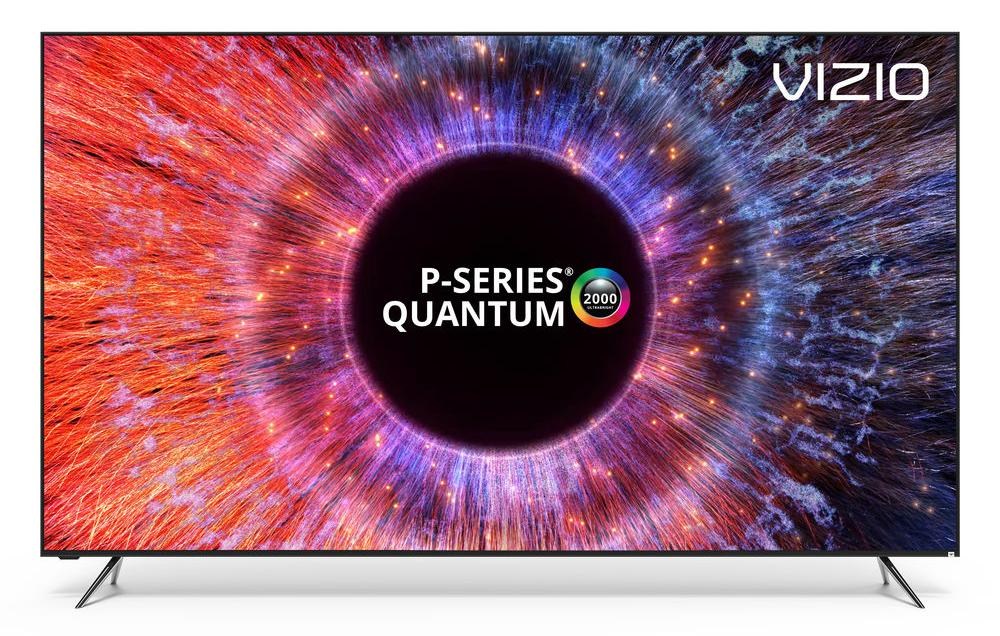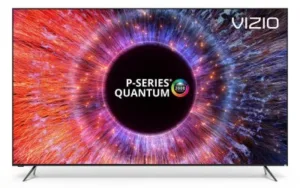Massive LCD capacity is coming into production in the next three years optimized for 65-inch and 75-inch TV. Most of the capacity is coming from 10.5 Gen fabs especially from China. There is a race for revenue and profit growth as competition is accelerating and price pressure is increasing.

Higher resolution and high performance capabilities such as wide color gamut (WCG) and high dynamic range (HDR) combined with technology development, lower cost and competitive pricing will drive 65-inch and larger TV display growth.
Massive 10.5 Gen LCD capacity coming
Massive 10.5 Gen LCD capacity is coming in over the next three years. Gen 10.5 fab can produce 8-up 65-inch or 6-up 75-inch panels from a single mother glass substrate, enabling higher efficiency and lower cost. Suppliers are hoping to replace 55-inch TV sales with 65-inch, driving replacement demand growth. BOE started its a-Si TFT LCD 10.5 Gen fab from the first quarter of 2018 and also is ramping up to full capacity in 2019. China Star (CSOT) has started its a-Si TFT LCD 10.5 Gen fab in the first half 2019 and is expected to ramp up even further in 2020. Foxconn/Sharp’s 10.5 Gen fab in China is also expected to start in the second half of 2019, ramping up to full production in 2020. By the year 2021 and 2022 about eight to ten 10.5 Gen fabs with huge capacity are expected to be in production. That will include LG Display’s 10-5 Gen oxide based AMOLED fab. Will there be enough demand for this huge capacity of 65-inch and higher size TV panels?

Race for revenue and profit amidst intense competition
With the growth of massive capacity, the entrance of new panel suppliers and TV brands, competition is accelerating and price pressure is increasing. In the last few years a slower growth rate, higher capacity, over-supply and low open cell prices have already resulted in low profitability. A fear of panel oversupply is now looming large over future years. Over-supply could lead to faster price reductions, delays in fab construction or ramp ups, cut in utilization rates and the closing down of older fabs. Some suppliers may also convert older LCD fabs to make OLEDs or QDOLEDs. TV size growth is essential to drive area growth to absorb the massive capacity.
After TV unit shipments declined in 2017, the market experienced growth in 2018 due to consumers upgrading their sets to watch World Cup soccer games and enabled by lower retail prices for large screen UHD TVs. Major brands such as Samsung reported strong sales for premium TV such as QLED TVs and ultra large size models. The 60-inch and higher panel market previously dominated by Samsung Display, LG Display, Sharp, AUO and Innolux. Now, BOE and China Star are bringing high volume capacity in 65-inch and 75-inch based on 10.5 Gen fab production. Competition will intensify leading to aggressive panel price reductions. Top TV brands such as Samsung LGE, Hisense, Sony, TCL and others will see intense competition.
Despite uncertainties, top brands are expecting demand for premium TV to grow including UHD, 8K and ultra large TV. Technologies such as 8K, OLED, Quantum Dot still carry premiums providing opportunities for higher revenue and profit.
Advanced TV technology can drive replacement demand
Product differentiation, technology innovations and cost reductions are needed for survival and growth. Large screen size, high resolutions (4K and 8K), HDR (High Dynamic Range), WCG (Wide Color Gamut), miniLED, QD and OLED are needed for product differentiation.
8K TVs with higher transmittance enable the display of sharper images with higher perceptual depth creating a more immersive experience, but 8K content is really lacking in the industry. Samsung’s machine learning system automatically up-scales 4K content for 8K TV. Consumers generally shift to higher resolutions to “future proof” their purchases. The Tokyo Olympics (2020) being broadcast in 8K combined with the development of 5G networks is expected to help 8K TV adoption rates.
HDR gives TV sets an ability to display a wider richer range of colors, much brighter white and much deeper black. HDR gives better color and better contrast. To drive HDR there is a need for higher peak brightness. WCG brings in a wider range of colors giving a more realistic experience.
Quantum Dot (QD) technology enables higher brightness, and better HDR and WCG. It can bring LCD TV performance closer to OLED and can even exceed it in certain areas (brightness). QD can empower LCD TV by enabling higher brightness (4000 cd/m² and above) and a significant increase in the color gamut (supporting more of BT 2020). Samsung QLED TVs have been in the forefront, with many different options including 65-inch, 75-inch size and 8K resolution. In 2018, QD TV prices have come down. Other brands have joined the market including Vizio, TCL, Hisense and others. Very high capacity from 10.5 Gen fabs in 2019 should help to reduce QD-based LCD TV costs, leading to higher adoption rates. QD TV gained stronger market share in 2018 and is already seeing major growth in 2019. Samsung Display is working on QD OLED is expected to start pilot production in 2019. It simplifies the panel structure and fabrication process and eliminates shadow mask patterning. However the process needs highly efficient blue OLED materials with a long lifetime. This could open up new opportunities for QD.
MiniLED backlight can enhance luminance and HDR in a LCD TV by increasing the number of LEDs and improving the picture performance. However, it has to provide a cost effective solution to be successful. LCD TV with MiniLED backlighting is expected to appear in the market in 2019. If customers can see a substantial difference in picture quality, MiniLED can drive replacement demand.
MicroLED self-emissive TVs from Samsung, LG and others will increase sales in future years, although technology challenges will confine it to a niche market in the near term.
OLED has secured a strong presence in the premium TV market because of picture quality, design differentiation, perfect black and an infinite contrast ratio. LG Electronics is the most successful brand expoliting LG Display’s OLED TV panels. Other brands such as Sony, Panasonic, Skyworth, TPV, Hisense, Konka and others have joined in, using LG Display’s panels. LGD is converting LCD TV capacity to OLED TV and may be accelerating its plans to develop 10.5G fab. Ink -jet printing (IJP) can offer lower manufacturing cost due to lower capex, lower material cost from simple structure and color filter elimination. But the lifetime of soluble blue OLED needs improvement.

Competitive Pricing will drive Super Size TV growth
In 2018, 65-inch UHD 4K TV prices reached $1100-1200 in North America and less than $1000 in China. This month, 65-inch 4K TVs from LG and Samsung are available for $600-$700 and Vizio’s 65-inch Quantum Dot TV is available for less than $1500. With more aggressive price reductions, 65-inch and above size TVs are expected to take a larger share of the TV market. TV brands are also starting to market 8K TV aggressively in 2019. Samsung’s 8K QLED 65-inch TV is in the market for less than $5000.
The new 65-inch and higher size TVs will have strong growth in 2019 and beyond due to the following factors:
- Massive capacity from Gen 10.5 fabs optimized for 65-inch and 75-inch display
- Increase in production efficiency and cost reductions
- Race for higher revenue and profit amidst fierce competition.
- Product differentiation using advanced TV technologies
- Thin bezel enabling larger screen size in the same form factor
- Over-supply driving panel price reductions
- Aggressive retail price reduction
Advanced TV technologies combined with larger screen size displays (65-inch and higher), lower costs and more competitive prices will lead to stronger growth in the next few years. – SD

Sweta Dash is the founding president of Dash-Insights, a market research and consulting company specializing in the display industry. For more information, contact [email protected] or visit www.dash-insight.com

